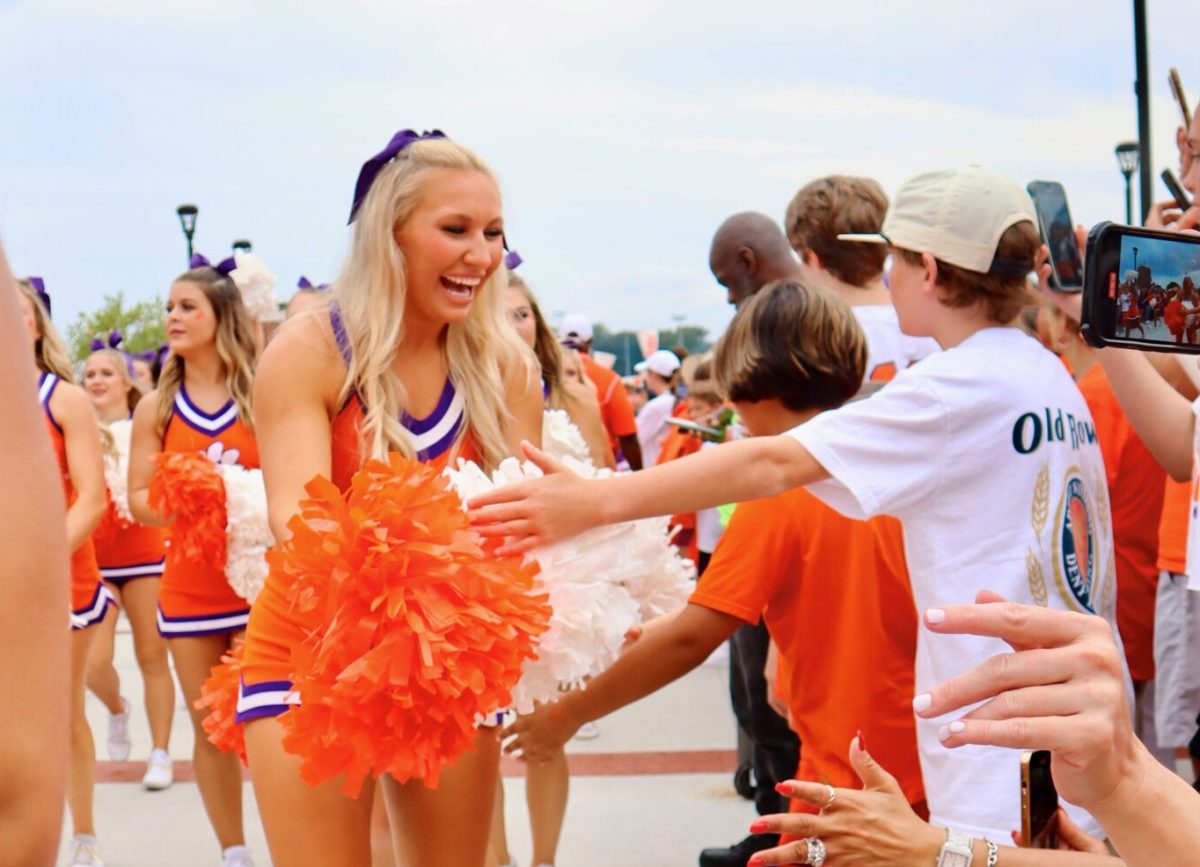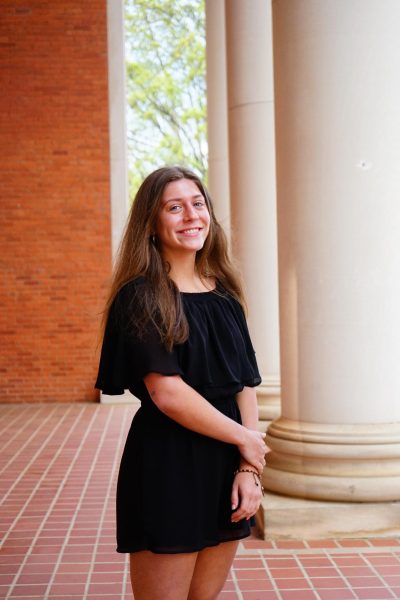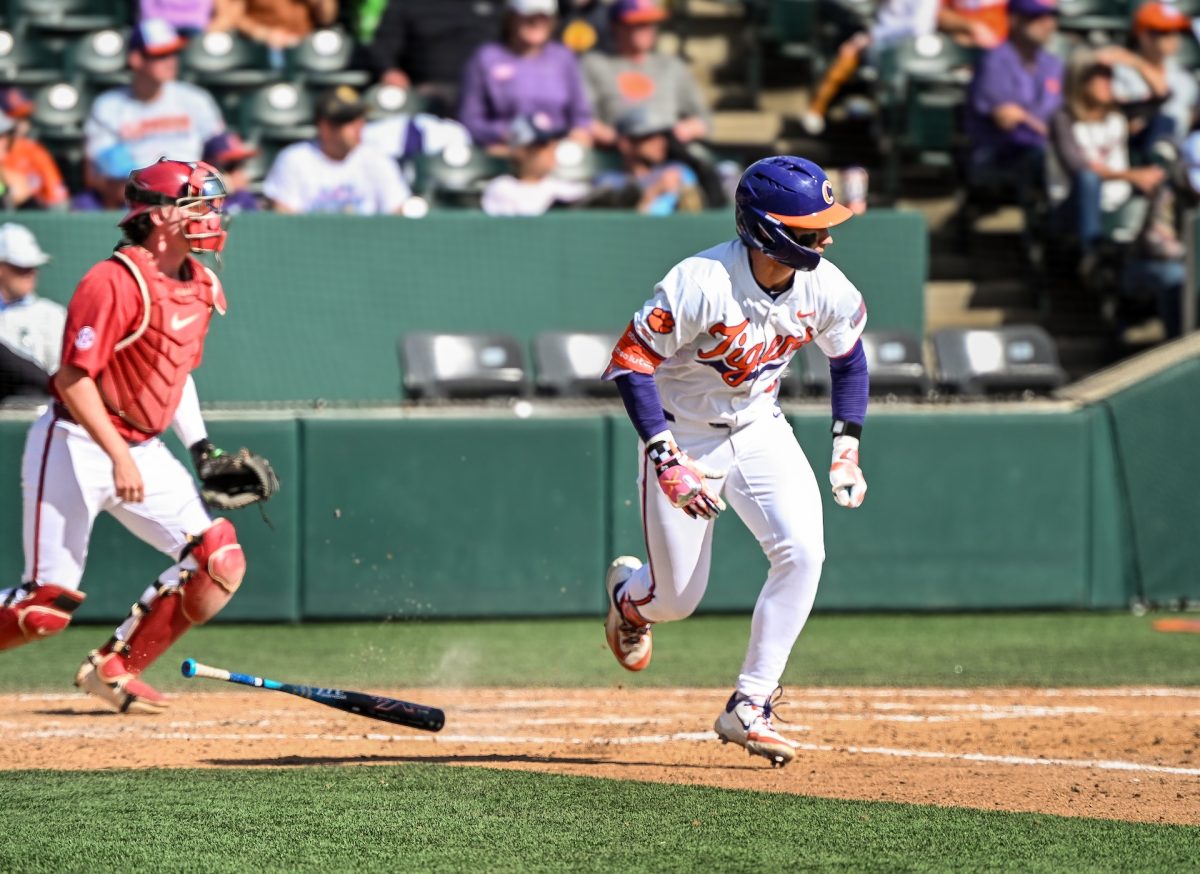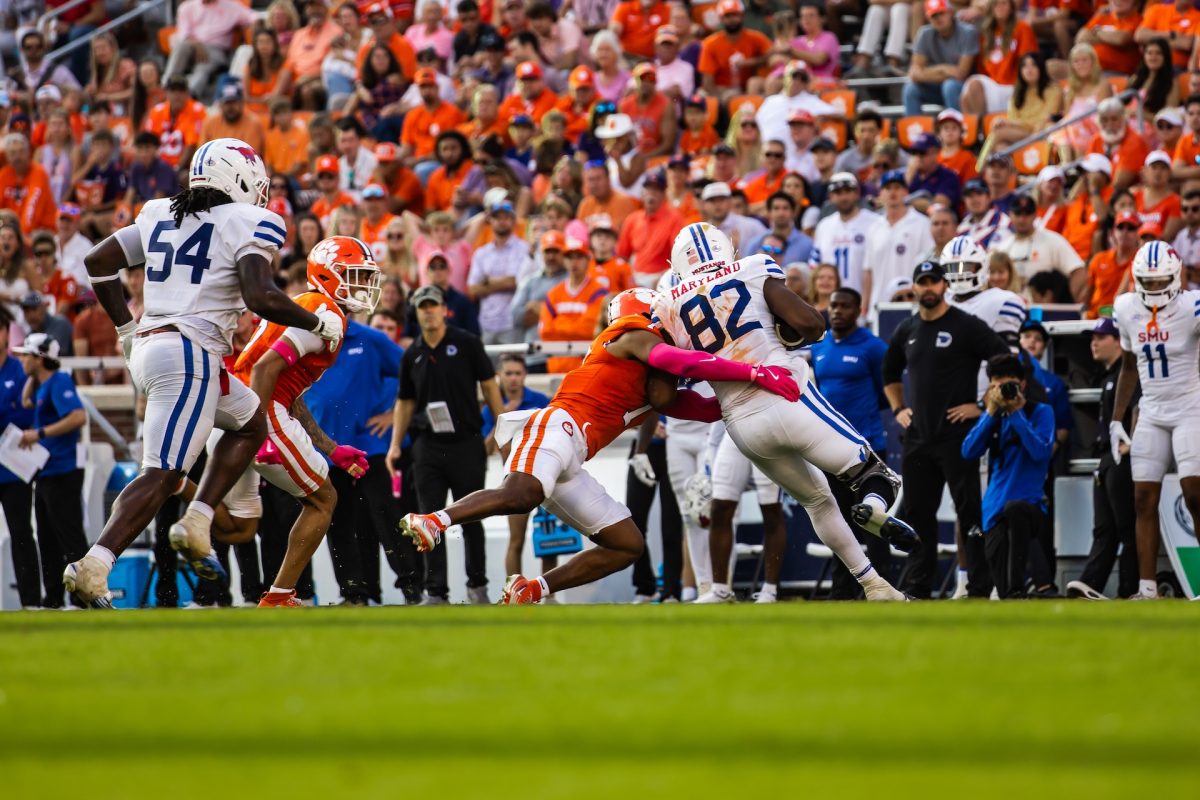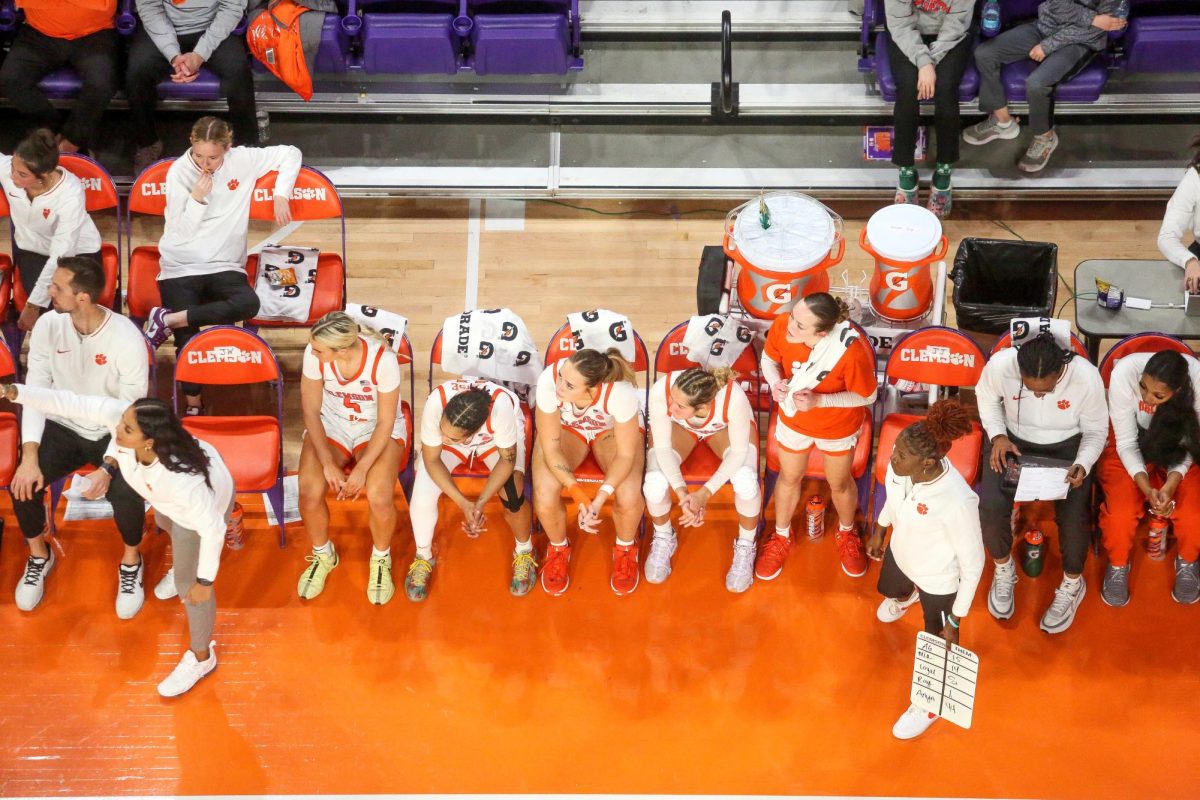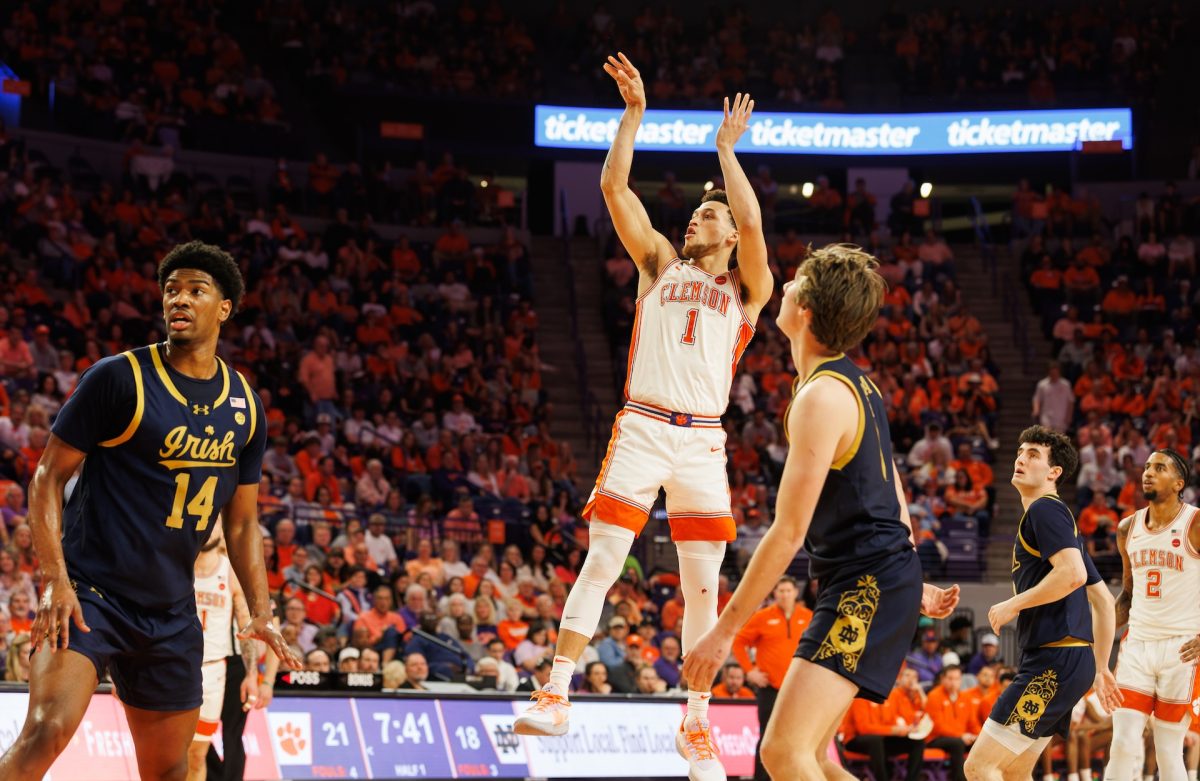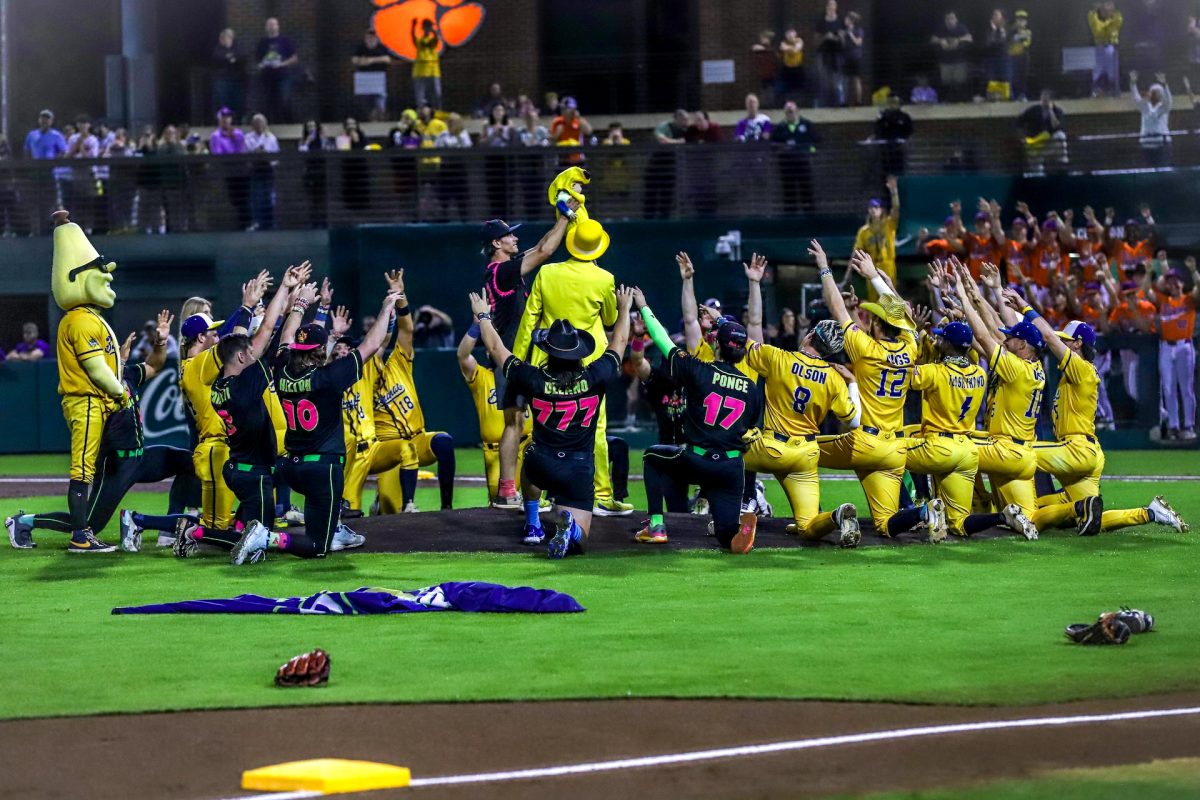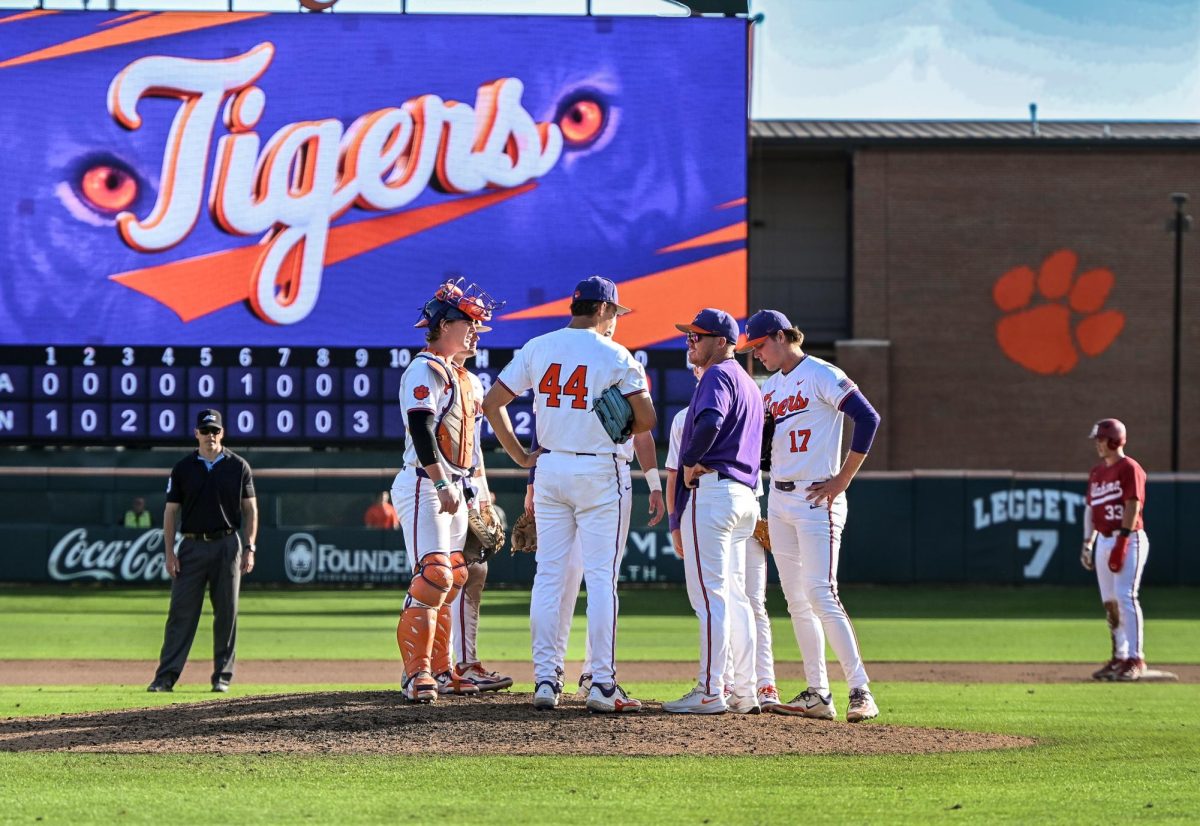The Clemson cheerleading program has been a staple of game days for decades. However, some cheerleaders feel that they are often overlooked and viewed in a different light than other athletes on campus.
Clemson’s cheer program is divided into two main teams: large coed and all-girl. Both teams make appearances at football, volleyball, men’s and women’s soccer and men’s and women’s basketball games.
Large coed has 18-22 members, and the all-girl team holds 18-24 spots.
Considering the effort and time commitment it takes to be on the team, the participants in the program often feel they’re undervalued by the community.
“There’s a lack of urgency,” senior all-girl captain Aiyana Wright said in an interview with The Tiger. “We’re barely recognized, and it’s frustrating when you’re at every event and work just as hard as every other athlete on campus.”
One of the largest discrepancies between the program and other sports teams is the access to facilities and resources.
Cheerleaders are only allotted five meals per week compared to other athletes’ unlimited meals, according to Wright. The team does not have a specific academic adviser and does not receive a textbook stipend as other athletes do. The cheerleaders are not guaranteed student-athlete tutoring hours and don’t receive early registration for classes, Wright added.
Wright said that without early registration, the team’s lift and practice schedule must revolve around accommodating all of their athletes, causing early or late practice times. Practices are held two to three days a week, with lifting and conditioning on alternate days in the Clemson strength and conditioning facilities.
The cheer team is an activity that is sponsored and funded by the Athletic department, according to the Clemson Athletics website. That being said, it is technically not an NCAA Division I-sponsored sport, nor is it one of the varsity sports that are more known on campus, such as football, softball or basketball.
Nonetheless, Clemson Athletics spokesperson Jeff Kallin told The Tiger in an email that Clemson makes “significant investments” in the cheer program and supports both the game day and competitive elements.
Wright said that the most prominent issue the team feels it faces is the lack of a designated practice facility.
While the program has been around for decades, it is still finding a place to call home for practice. According to the cheerleaders, the team must find open spots on campus that are available, and the location usually changes from day to day. With the possibility of practicing on grass and not mats, there is a safety concern. Some cheerleaders even carry around mat equipment in their vehicles, as the team does not have a place to store it.
Scholarships are awarded to cheerleaders on the basis of good standing with the program in order to qualify. First-year members can receive $750 for the academic year, with fourth-year members receiving the maximum $1,500 per year, according to Kallin.
“From time to time, it can be hard doing a year-long season and sometimes feeling undervalued for all we do and the true athleticism is never fully seen,” junior cheerleader Ava DeStefon said in an interview with The Tiger. “Sometimes the lack of funding and support makes it hard to do all the things we hope and wish for the program.”
Cheerleaders do have access to the Clemson Athletic Brand Institute and the NIL program, according to Athletics. The program is also acknowledged in Letterwinner recognition, senior day recognition and National Girls and Women in Sports Day.
Like any other sport at Clemson, minimum requirements must be met in order to join the team. Cheerleaders must reach the required full-time student 12 credit hours and hold at least a 2.0 grade point average.
“At this point, we’re desensitized to it,” Wright said of the program’s challenges. “We’re a very self-guided team. Captains take a primary role in knowing the material and how the program should be run.”
Clemson is in the process of building a new 21,000-square-foot gymnastics facility. Despite the similarity in equipment, there is no indication that the cheer program would be able to have access to the facility.
Without the NCAA sponsorship, programs like cheer are not specifically required to have certain resources or funding, though Clemson’s cheerleaders are supplied with a strength and conditioning coach and a nutritionist. They also receive a full-time athletic trainer on staff.
“We actively listen to our spirit squads, from both the coaching staff and the athletes directly via survey, and we’re always looking to improve,” Kallin said. “We recognize and appreciate their contributions and impact upon Clemson Athletics, and therefore provide resources to the program.”
Wherever Clemson’s spirit is being celebrated, the program’s three coaches and 56 athletes are always there. From the First Friday Parade to spring nationals, the squad is working year-round to advance their skill set and support the University.
While the majority of its work is performing at Clemson athletic events, the team trains year-round to compete in the National Cheer Association competition each April in Daytona, Florida. In 2021, the team placed first in the advanced all-girl Division I finals.
“Fans usually only see our work at games, but we go far beyond that,” junior cheerleader Izzy Hageman said in an interview with The Tiger. “The time commitment sometimes goes unnoticed between our community appearances, athletic events, traveling and our own demanding practice schedule.”
The program has switched to a recruitment process over tryouts in recent years to grow the team’s talent and outreach. The expected skills to be a cheerleader include three standing consecutive tucks, a consecutive jumps sequence and stunting with one partner on one leg.
DeStefon also noted that because the season is year-round, they have necessary fundraisers to help keep their program afloat. The team hosts cheer conditioning clinics for the public, sells t-shirts and hosts various fundraisers throughout the year.
Overall, the team just wants to be taken seriously.
“Being a part of this school and this program is indescribable,” DeStefon said. “At the end of the day, I am beyond thankful for the group of hard-working athletes I can call my teammates.”
An earlier version of this article said that the all-girls cheer team participates in more events than the coed team. The coed team engages in the same amount of events. The Tiger regrets this error and has since corrected it.



